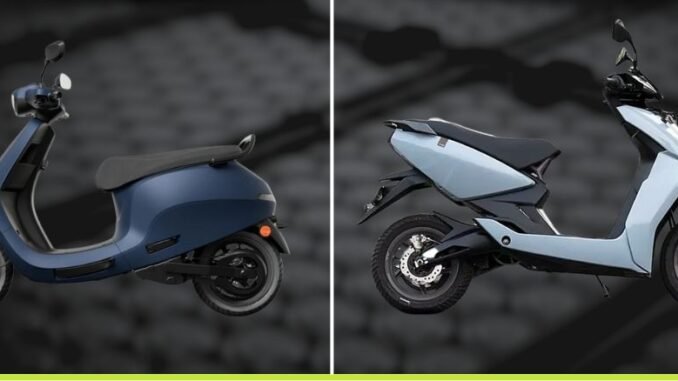
Batteries that overheated. Motors that failed mid-ride. Riders stranded miles from the nearest charging point. These were once the all-too-familiar risks faced by India’s earliest electric two-wheeler users. But not anymore.
Today’s EV scooters are smarter. They can predict failures, adjust battery temperature on the move, and optimise performance—all without the rider lifting a finger. Behind this leap are innovations in Battery Management Systems (BMS), lightweight materials, intelligent drivetrains, and AI-powered features that are silently reshaping India’s electric mobility landscape.
The Brain Behind the Battery: Smart Management System
At the core of every modern electric scooter beats an unsung hero: the Battery Management System (BMS). It’s more than a glorified battery monitor—it’s the machine’s thinking brain, processing thousands of data points every second to keep things running smoothly.
Companies like Lithion Power provide high-voltage 72V BMS systems custom-designed for Indian roads and climates—handling urban heat, rough usage, and the stop-start grind of daily commutes.
Maxwell Energy goes a step further, offering ISO 26262-certified BMS solutions that give OEMs real-time insights into battery State of Charge (SOC) and State of Health (SOH). Their systems power over 100,000 vehicles across the country—quietly predicting faults before they become roadside disasters.
Meanwhile, Pricol, in partnership with BMS PowerSafe, builds modular platforms that can be fine-tuned for the specific needs of Indian scooters—be it a sturdy workhorse or a nimble city runner.
Even India’s big OEMs are leaning into BMS intelligence. TVS iQube uses a globally sourced BMS designed for adaptive thermal control and early fault detection.
Ola Electric’s S1 Pro boasts its own in-house BMS, built for rapid, safe charging and thermal protection—essential for its fast-charging, high-performance promises.
Building Lighter, Smarter, Faster: The Materials Revolution in EV Scooters
What a scooter is made of matters as much as what powers it. Weight equals range. Structure equals safety. Indian EV makers are shaking off heavy steel in favour of smart materials that make scooters lighter, tougher, and more efficient.High-strength steel trellis frames are making a comeback in performance scooters. These triangular-patterned frames reduce stress points and vibrations while shaving off weight—thanks to design inspirations like Europe’s Fatigue4Light project, which shows potential for 40% weight reduction without compromising durability.
Ather’s Rizta proudly flaunts a twin-spar aluminum frame that cuts weight by 22%, while maintaining stiffness perfect for India’s urban obstacle course. Inspired by models like the Ford Mach-E, Indian OEMs are experimenting with hollow cast aluminum subframes that promise 25% weight savings.
Startups like Ultraviolette are betting on carbon-fiber-reinforced polymers (CFRP), reducing swingarm weight by 30–35%. Even mid-range scooters are benefiting from fiberglass hybrids, boosting impact resistance by 15%. And in Tamil Nadu’s factories, WAAM (Wire Arc Additive Manufacturing) is speeding up chassis production with crash-resistant, ultra-light frames—poised to cut costs by 15% in coming years.
This isn’t accidental progress. It’s the result of careful engineering, daring startups, and OEM giants working together to make India not just a participant—but a leader—in the global EV race.
Smart Features: When Scooters Learn to Think
Today’s EV scooters are connected, data-driven, and almost self-aware. It’s not science fiction—it’s Indian streets.
BattRE Electric’s SIM-enabled scooters let riders set geofencing boundaries, activate speed locks, and get theft alerts—all via a smartphone app. PURE EV’s JioThings cluster offers 4G navigation, ride data, and remote health checks. Revolt Motors adds real-time telemetry to the mix—so riders know their scooter’s mood, even before it misbehaves.
Fleets are getting smarter too. Intangles and Loconav’s AI platforms predict failures, analyse battery stress, and recommend route optimisations—perfect for delivery fleets chasing uptime.
The Predictive Edge
AI models from Maxwell Energy and Intangles now track motor heat, voltage instability, and driver behaviour, flagging risks before they cause costly breakdowns. Some systems even use geofencing to guide riders to nearby charging stations when the battery dips dangerously low.
Regenerative Braking: Energy That Comes Back
Why waste motion when you can recharge? Brands like Livguard and Ola Electric harness regenerative braking to recover kinetic energy during deceleration—extending battery life by up to 12%. Premium scooters like the Ather 450X offer smooth torque-based braking, while entry-level models settle for simpler digital versions.






